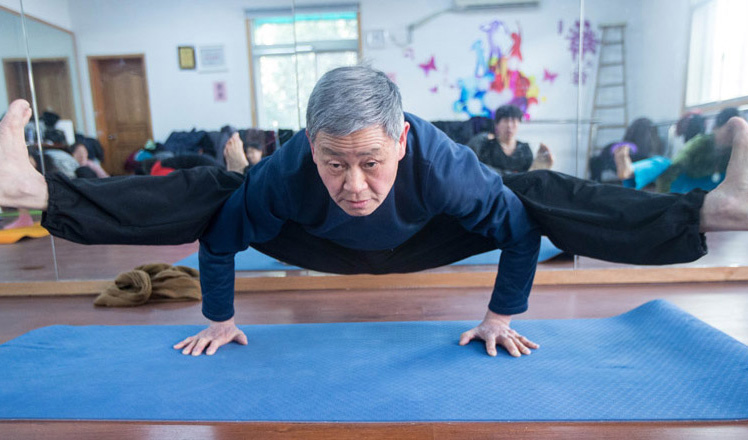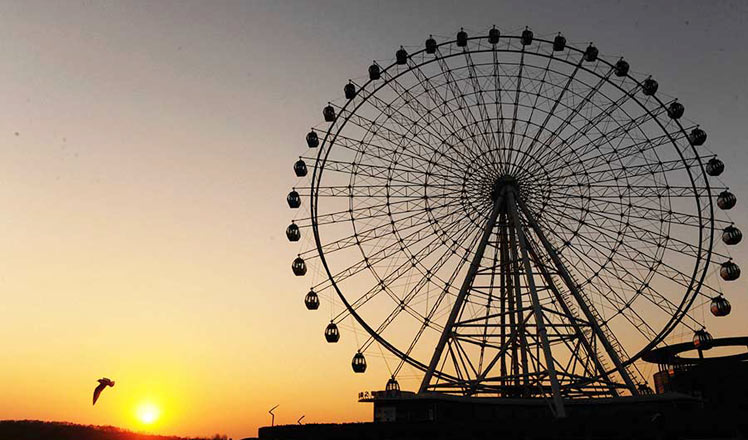Cow hearts used in old cosmetics - Archaeological research
Updated: 2016-01-29 07:54
By CHENG YINGQI(China Daily)
|
|||||||||
Ancient cemetery gives clues to women's status
 |
|
A leather bag and cosmetic sticks have been excavated from Xiaohe Cemetery. CHINA DAILY |
It is said that the average modern woman consumes more than 3 kilograms of lipstick in her lifetime.
Some might find all that wax, oils and emollients a bit hard to digest, but the prehistoric inhabitants of Northwest China's Xinjiang Uygur autonomous region made their women's cosmetics sticks out of something a little more edible around 3,500 to 4,000 years ago.
According to the latest archaeological research published on Thursday night in Scientific Reports, an online, open access journal from the publishers of Nature, the red cosmetic sticks buried with women in Xiaohe Cemetery (1980-1450 BC) were made from cow hearts.
"In previous excavations, a number of bronze ware items and other inorganic relics were found. But these cosmetic tools, being made of organic matter, are very rare because they are much more difficult to preserve," said Yang Yimin, a professor from the College of Humanities and Social Sciences under the University of Chinese Academy of Sciences, and an author of the newly published research.
The red cosmetic sticks, around 6.5 cm in length and 0.9 cm in diameter, were found in leather bags buried alongside the mummified corpses of several females. Scientists inferred from the find that the sticks were not only used to paint faces, but also to color relics that have been excavated from Xiaohe Cemetery.
Samples taken from the cosmetic sticks were submitted to a synchrotron radiation micro-computed tomography test-a type of X-ray technology-that found they were made from cow hearts covered in pigment by analyzing their interior structure and constituent proteins.
"The color red usually serves as a symbol for the worship of blood, and the heart is one of the most important organs in cattle, as the center of blood circulation. This indicates the cosmetic sticks were used to paint human faces red and were significant, possibly sacred, objects used as part of the Xiaohe people's religious behavior," Yang said.
Xiaohe Cemetery is a Bronze Age site that features more than 160 tombs located in the east of Xinjiang's Tarim Basin. It was first discovered in the 1930s by a team of Swedish archaeologists, but was not excavated until 2002.
"In recent years, a number of significant discoveries have been made in Xiaohe Cemetery, which will open a new window on our understanding of this region's inhabitants, their prehistoric lives and early communication with both Eastern and Western cultures," said Li Wenying, a researcher of Xinjiang Institute of Relics and Archaeology in Urumqi, capital of Xinjiang.
Earlier research found that the Xiaohe people had blond or flaxen hair and eyelashes, which indicates that gene mixing between East and West started at least 4,000 years ago.
The newly reported cosmetic sticks are one of the clues that point to women playing a central religious role and enjoying a high social status.
- Students must learn safety education, experts say
- 73 bodies recovered from rubble of Shenzhen landslide
- Chinese travelers lead 2015 global outbound tourism
- S Korea to issue 10-year visa to highly-educated Chinese tourists
- A glimpse of Spring Rush: little migrant birds on the way home
- Policy puts focus on genuine artistic students
- Goodwill sets tone at Wang, Kerry's briefing
- Obama picks new Afghan commander
- Ceremony held in Auschwitz Camp to remember the Holocaust
- Thousands of beckoning cat on display in Japan's Goutoku Temple
- Chinese fishing boat capsizes off S. Korean island: Yonhap
- 42 cases of Zika infection reported in N.E. Panama

 Top 10 best selling cars on Chinese mainland 2015
Top 10 best selling cars on Chinese mainland 2015
 Warm memories in the cold winter
Warm memories in the cold winter
 The world's highest library
The world's highest library
 In-flight meal prepared for travel rush ahead of Spring Festival
In-flight meal prepared for travel rush ahead of Spring Festival
 72-year-old teaches yoga for free in Hangzhou
72-year-old teaches yoga for free in Hangzhou
 Sea ice traps boats as cold wave sweeps across East China
Sea ice traps boats as cold wave sweeps across East China
 10 tourists grab free money in one minute in East China
10 tourists grab free money in one minute in East China
 Warm colors at sunrise cast off the chill in Qingdao
Warm colors at sunrise cast off the chill in Qingdao
Most Viewed
Editor's Picks

|

|

|

|

|

|
Today's Top News
National Art Museum showing 400 puppets in new exhibition
Finest Chinese porcelains expected to fetch over $28 million
Monkey portraits by Chinese ink painting masters
Beijing's movie fans in for new experience
Obama to deliver final State of the Union speech
Shooting rampage at US social services agency leaves 14 dead
Chinese bargain hunters are changing the retail game
Chinese president arrives in Turkey for G20 summit
US Weekly

|

|








